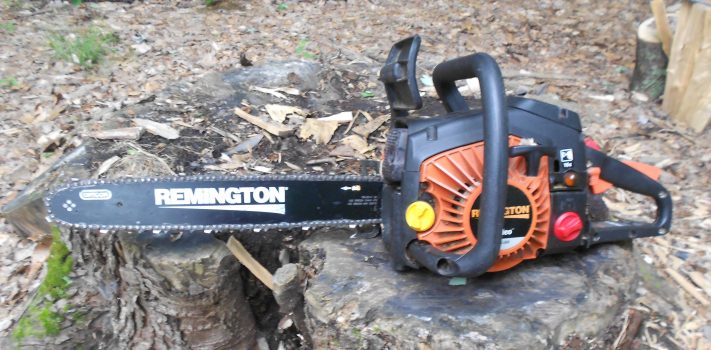Email a copy of 'Wood Cutting Made Slightly Less Dangerous - Part 2, by The Novice' to a friend
7 Comments
- Ad USA Berkey Water Filters - Start Drinking Purified Water Today!#1 Trusted Gravity Water Purification System! Start Drinking Purified Water now with a Berkey water filtration system. Find systems, replacement filters, parts and more here.
- Ad L3 UNFILMED WHITE PHOSPHOR COMMERCIAL GRADE NIGHT VISION PACKAGEHuge Savings $400 off normal cost!


The other thing that might have helped, is a felling wedge or two.These help a lot, especially in getting the saw out of a pinch, or preventing the pinch in the first place. They also rock the tree in the desired direction.
Good morning it’s me again. I have two points today that may help. First, when cutting your hinge by back cutting do not over cut. Your hinge on average should be 10% of the diameter of the tree. This slightly varies by species, but is a good rule of thumb. Hence a 15” Tree should have roughly a 1 1/2” hinge. If you cut until the tree starts moving, most times your hinge is too small and you can’t control the tree through its fall. The tree at that point is out of control.
Second, with your proper face cut, back cut, and 10% hinge, the right thing to do is use wedges to drop the tree. There are many different brands, I use hard head wedges. The larger the tree the more wedges you may need. Once your back cut is well started, drive a wedge in to keep the tree from setting back like it did in the story above. Cut your hinge as described, pull your saw out, then drive the wedges, place more wedges if you can, continue driving wedges until the tree starts to drop. Move away quickly at a 45 degree angle from the tree in your precleared escape route.
Very rarely will I not have to use wedges while felling. If a tree has a slight lean in the direction I want it to fall; maybe. (If the tree is a hard leaner, say almost 35 to 45 degrees, a standard face cut, back cut is totally inappropriate. That should be addressed in another article.) I always stick a wedge in the back cut in case a wind wants to make the tree sit back.
Trees are like puzzles, they are all different and take slightly different means to get them safely on the ground.
Enjoy your work, and stay safe out there.
Great directions, Roadkill. Thanks for sharing them.
Novice,
I am a 64yo with a degree from the school of hard knocks. I will always be a novice and 100% of the time I will always approach every tree removal job as if I have never cut THAT tree before. I actually feel that way about many of the tasks I take on around the homestead.
A few more notes for your much appreciated article.
I like the loggers trigonometry to determine the height of a tree. I usually use a nearby axe handle. My college educated chemist son was impressed with that skill.
I often use a licensed and bonded pro. While I do enjoy working my own wood lot I do use a tree service when I am uncertain. I get a cash discount and I clean up the slash. Dead trees are dangerous to climb and often just don’t act right.
You will definitely get that feeling of commitment as soon as you notch a tree. Looking up an 80′ fir that has grown for >50 years should be humbling. There is simply no going back once you make that first cut. Have all of your tools staged and ready to use. Have your escape route planned and cleared.
I use tools called falling wedges in the back cut. These wedges are plastic, chain saw safe wedges that help to keep the tree moving in the right direction.
Alder trees should be wrapped with rope or chain about 18″ above where you plan to cut. This is to prevent the tree from splitting vertically as it is falling. This sudden release of energy, often called a “barber chair” is unexpected and can be deadly.
Praise the Lord! Guardian Angels should never be relied upon but always recognized and appreciated. be thankful in all circumstances.
Lee, I knew a logger who had a tree “barber chair” in him. It hit him in the face, broke his jaw, and folded back a large flap of skin. They did a good job putting him back together, so that the scars were barely visible. But last I heard, that side of his face was still numb.
The Novice and Lee’s comment, it’s good when you point out the >hazards of cutting down trees. … There’s more to cutting trees than just buying a chainsaw. … The two part article is a worthwhile addition to SurvivalBlog. YouTube has some videos on ‘Barber Chair hazard when cutting trees.’
+ A man old enough to have adult children, that can still climb a tree like Tarzan, can survive. = “I tied one end of the rope to the back of my belt and free climbed about 30 feet into the tree to attach it.” [From article]
I am an experienced chainsaw operator. I was 20-30 feet up a tree, delmbing for eventual removal. I was wearing two safety harnesses, delimbing with a 12” chainsaw.
I felt my purchase slip so I reached around to “hug” the tree to keep from falling. The saw was in my left hand and still running.
Oops. Just about chopped my right thumb off.
After reconstructive surgery, I was off work for almost three months. Luckily, I had built my sick time bank up, so the impact was negligible.
Just be careful is all I can say.